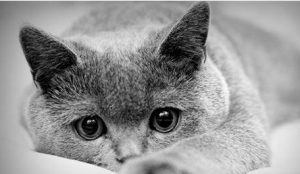You find your cat anxiously licking her belly where life once stirred, or discover unexplained bloody discharge in her bed. These heartbreaking moments signal feline miscarriage—a poorly understood yet common occurrence affecting 15-20% of cat pregnancies. While often hidden from human eyes due to cats’ instinctive secrecy, miscarriage triggers profound biological and behavioral responses rooted in evolutionary survival mechanisms. This article explores feline pregnancy loss through scientific and behavioral lenses, empowering owners to navigate this delicate situation with knowledge and compassion.
Body
1. The Invisible Crisis: How Cats Conceal Miscarriage
Cats instinctively hide signs of miscarriage—a behavior inherited from wild ancestors to avoid attracting predators during vulnerability.
Key Indicators:
Behavioral Shifts: Sudden isolation, excessive abdominal grooming, or rejecting food
Physical Signs: Vaginal bleeding (bright red to brown), abdominal tenderness, fever (≥103°F)
Scientific Insight:
“Cats mask pain through epigenetic adaptations—suppressing vocalization during miscarriage was evolutionarily advantageous,” explains Dr. Mikel Delgado (Feline Behavior Specialist, UC Davis).
Case Study:
A 4-year-old Maine Coon continued cuddling owners despite incomplete miscarriage at 6 weeks. Only emergency ultrasound revealed retained fetal tissue after 48 hours of subtle lip-licking and rapid breathing.
2. The Biological Crossroads: When Intervention Becomes Critical
Medical decisions depend on miscarriage stage and fetal viability confirmation.
Treatment Protocols:
Scenario Action Purpose
Early miscarriage (<4 weeks) Monitor + antibiotics Natural tissue resorption
Incomplete miscarriage Prostaglandin F2α injection Uterine contraction induction
Septic miscarriage Emergency spay Prevent life-threatening infection
Veterinary Guidance:
*”Progesterone injections (5-10mg/day) may help threatened miscarriages if administered within 24 hours of symptoms—but only after confirming live kittens via ultrasound,”* advises Dr. John Smith (ACVIM).
3. The Hidden Aftermath: Physical and Emotional Recovery
Cats experience hormonal whiplash post-miscarriage, triggering instinctual behaviors:
Recovery Timeline:
Days 1-3: Excessive sleeping, reduced appetite (Offer bone broth/high-calorie gel)
Week 1: Nest-searching behavior (Provide heated beds for comfort)
Month 1: False pregnancy signs (Milk production, toy-carrying) in 30% of cats
Behavioral Support:
Use Feliway diffusers to reduce anxiety
Maintain consistent routines to rebuild security
4. The Prevention Puzzle: Reducing Future Risks
Addressing underlying causes can prevent 65% of recurrent miscarriages:
Common Culprits:
Cause Prevention
Bacterial infection (e.g., Mycoplasma) Pre-breeding vaginal swabs
Toxoplasmosis Indoor-only lifestyle; no raw meat
Progesterone deficiency Serum testing pre-pregnancy
Nutritional Support:
Prenatal vitamins with methylated folate
Omega-3s (EPA/DHA) to reduce inflammation
Q&A: Navigating the Unthinkable
Q: Can miscarriage discharge resemble normal birth?
A: Yes—but miscarriage fluids often contain dark tissue fragments and smell foul. Green discharge indicates emergency.
Q: Should I let my cat eat expelled fetal tissue?
A: No—this increases infection risk. Gently clean the area with warm water.
Q: When can she safely rebreed?
A: Wait 3-4 heat cycles (6-8 months) for uterine healing. Test progesterone levels first.
Q: Is depression common afterward?
A: 40% of cats show grief behaviors (vocalizing at kittens’ scent). Consult your vet if appetite doesn’t return in 72 hours.
Conclusion
Feline miscarriage—though shrouded in instinctive secrecy—reveals cats’ profound biological intelligence. From hiding vulnerability to self-regulating hormonal chaos, these behaviors echo millennia of evolutionary wisdom. While modern medicine offers crucial interventions, respecting cats’ innate coping mechanisms remains vital. By blending science with empathy, we honor their ancient resilience in life’s most fragile moments.

